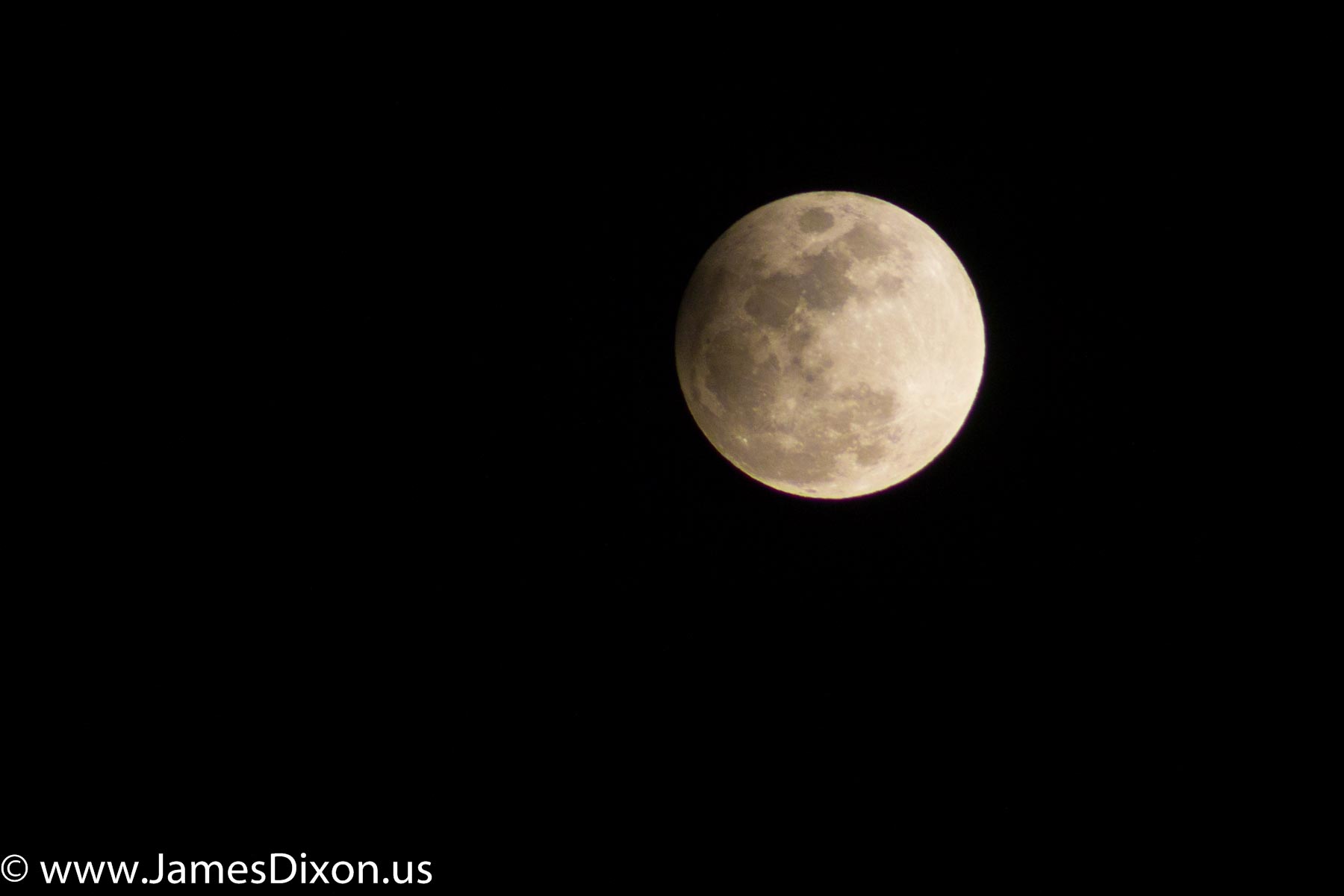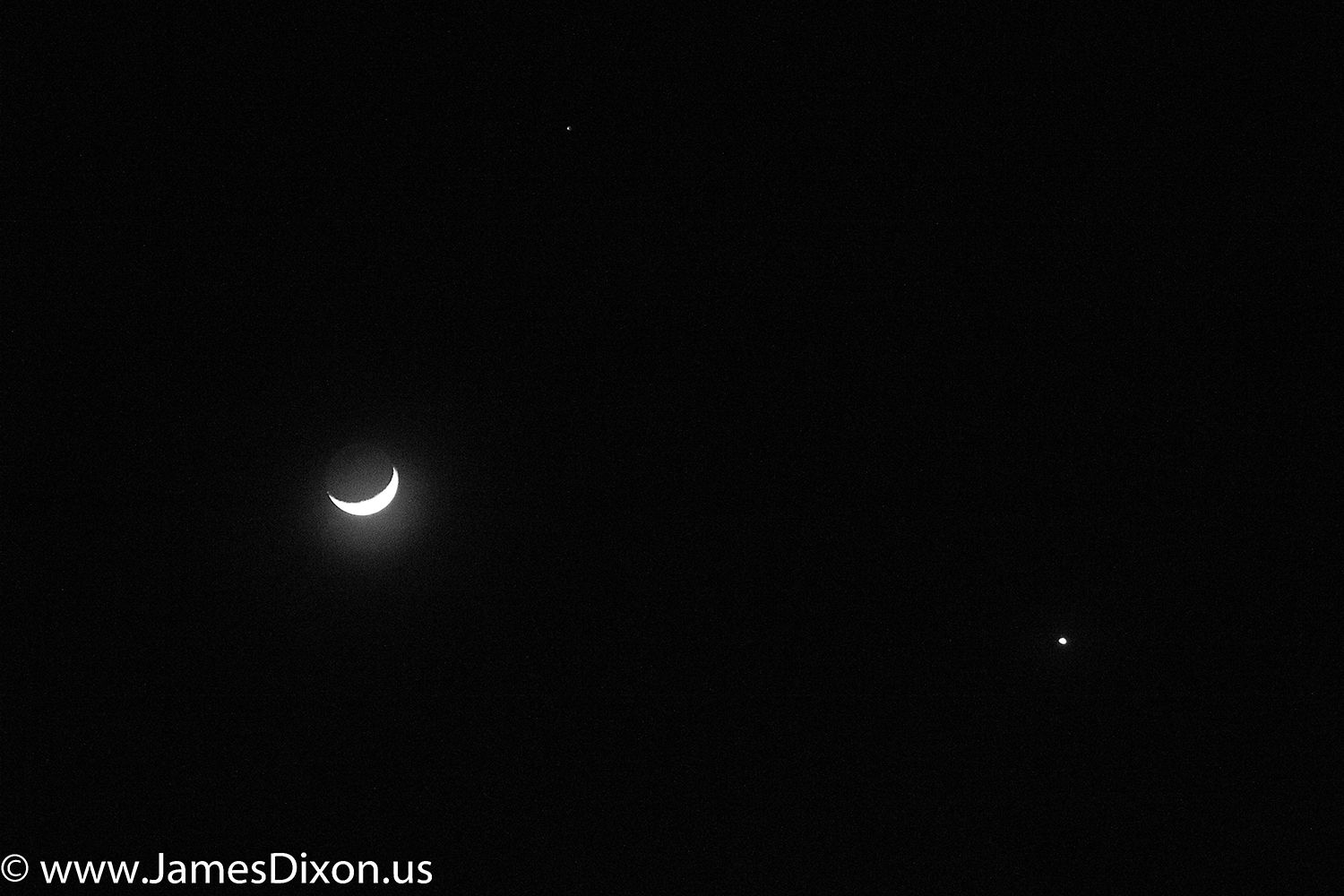From the top down, we have the Moon, Jupiter (near the middle), and Venus in the clouds this morning. Taken a little after 6 AM. I might try again tomorrow if it is clear.
Penultimate Eclipse of the Moon
That sounds better than Penumbral Eclipse of the Moon which is more accurate. I was on my way out the door when I saw and remembered the eclipse so I ran back in for the camera. I was surprised about how easy it was to see this non-umbral eclipse. That said, look to the upper left near the Mare Frigorus area. That looks darker there. I don’t know how close the umbra came tonight but its easy to imagine it’s right there off the edge of the Moon.
Moon, Mars, and Venus 1/31/2017
Here’s a picture of the left to right from this evening. The Moon and Venus are, respectively, always the second and third brightest objects in the sky not counting occasional supernova. Mars on the other hand gets really bright for a couple months every two years and then fades to relative obscurity. So it is here. The Moon is about 500 times brighter than Venus and Venus is perhaps 100 times brighter than Mars right now. For this picture, I used a regular DSLR with a 300mm lens set to 6400 ISO and a 1/80th second exposure. That was the shortest exposure that showed Mars and while longer exposures showed the ruddy color of Mars they also blew out the Moon and Venus. So, I had to compromise.



